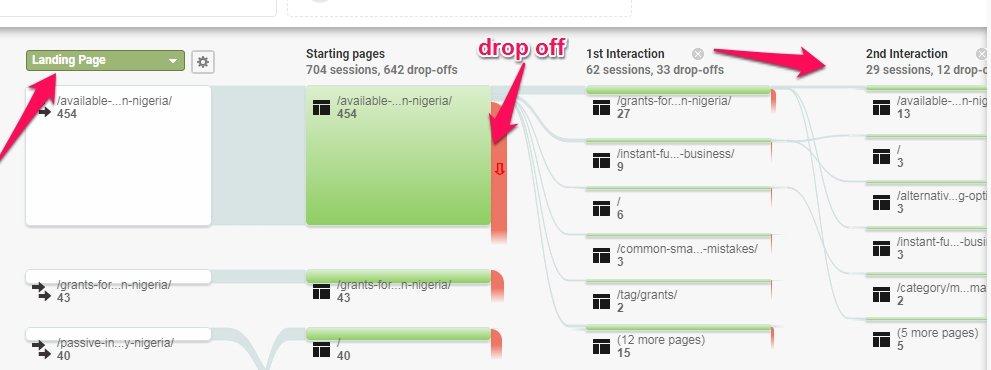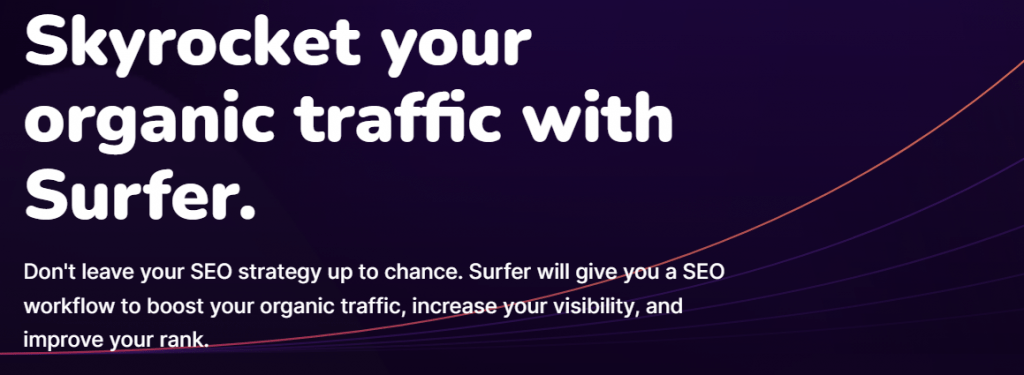So, you are here and wondering: “how do I increase organic lead generation using SEO for my business?” Let these time-test strategies guide you as you seek to boost your lead generation without spending a ton of money
Are you searching for a surefire way to generate more organic leads for your e-commerce or brick-and-mortar business?
If yes, then creating an organic lead generation strategy is a cost-effective way to attract more paying prospective customers to your company’s website. Without spending a ton of money on lead-gen campaigns.
You Might Also Like: The Top 15 Small Business Challenges and How to Navigate Them
Want to Grow Your Real Estate Business? Download the Complete Grant & Funding eBook for instant access to grants, guides, and more. 80+ Grant and Scholarship Opportunities (FG, State-by-State, General & Underrepresented Groups Scholarships, Plus Grant Writing Checklist). 900+ Copies Sold Already. Get Your Copy Now
Why Organic Lead Generation?
According to statistics by Marketo, “93% of B2B companies say content marketing generates more leads than traditional marketing strategies.”
While “B2C companies that blog 11+ times per month get more than 4X as many leads than those only blogging 4-5 times per month.” says Hubspot.
This means that generating leads organically isn’t just a cost-effective marketing tactic but a strategy that equally rivals leads acquired through paid ads.
What is Organic Lead in SEO?
Organic lead in SEO, organic lead or SEO leads are leads you get as a result of people searching for related products and services on search engines instead of through paid ads or visiting your site directly.
In a nutshell, they are leads from search engines.
As more people turn to chatbots and voice searches to find what they’re looking for, it’s worth thinking about how your brand shows up in these spaces. Some agencies provide tools that make it simpler to fine‑tune your content for both traditional search and AI platforms, so you’re more likely to be found wherever your audience is looking.
As more people turn to chatbots and voice searches to find what they’re looking for, it’s worth thinking about how your brand shows up in these spaces. Some tools make it simpler to fine‑tune your content for both traditional search and AI platforms, so you’re more likely to be found wherever your audience is looking.
When people search online on Google, Bing, or any other search engine, they often do so with phrases and words (read: Keywords) they believe would help them find the solutions or products they are after.
And, if you optimized your website or brand’s online presence with those keywords, your site is likely to appear in search results.
Increase organic lead generation using SEO
That said, the question becomes, how do you increase organic lead generation using SEO?
Thankfully, this article teaches you seven time-tested, step-by-step strategies to generate organic leads without breaking the bank.
Let’s get started…
Know Your Audience
Before boarding the “organic Leads” train, the first thing to do would be to thoroughly understand your audience.
Your goal is to attract prospective clients and to do this, you must first learn how to create relevant content that piques their interest.
As it turns out, you cannot create relevant, timely, and helpful content for your target audience without clearly understanding who they are, their pain points, needs, desires, and what phase they are in the buyer’s journey.
One way to understand your target audience is by creating a detailed”Buyer Persona.”
A buyer persona is an educated hypothesis on the ideal customer profile for your small business.
In other words, it describes the common traits and characteristics of someone most likely to purchase your products or desire your services.
Keep in mind that if your business targets different types of people in your niche, you will need to create more than one buyer persona – which is OK.
For example, if you run a business that sells diapers, your buyer persona will include the following:
- Full-time Mothers
- Full-time Fathers
- Working Dads
- Working Moms
- Etc
Creating a persona for each type of customer allows you to effectively create content that speaks directly to their needs while at the same time positioning your business as a source for solutions.
So how do you create your buyer persona?
To successfully embed your brand in the minds of your target audience, you need to understand these five things about your prospective buyer.
Their:
- Demographics
- Household income
- Online behavior
- Pain points
- Buying habits
Gathering customer information based on these five points will help you visualize who will most likely patronize your business.
Once you can figure out your customer, creating content that attracts them becomes pretty easy.
Learn more about: How to create detailed buyer personas for your small business
Do Keyword Research
The next step is to investigate what keywords/phrases your customers use to hunt for your products/services on search engines and voice recognition apps.
For example, if you run a flower shop that specializes in weddings, some customers might search for you using keywords like:
- Wedding bouquets
- Bridal flowers
- Wedding flower shop
- Wedding florist
- Etc.
Keep in mind that the more precise a keyword is, the higher its possibility of appearing on the first page of Google or Bing.
So how do you discover keywords?
Although most people suggest you copy-paste a bunch of keywords from your competitors’ sites, I recommend you use a keyword research tool instead.
A keyword research tool lets you input a few words relating to your business into its search engine, then provides you with similar keywords plus their average monthly search volume.
This means that not only will you be getting new keywords that probably didn’t cross your mind, but popular search terms, including their search volumes.
Some popular keyword research tools include Moz, Soovle, and Jaaxy. However, Google Keyword Planner and Ubersuggest are pretty cool keyword research tools you should have in your marketing toolkit.
Remember: Your customers will be looking for keywords that match exactly what appears on your website, blogs, or social media platforms.
Therefore, selecting appropriate — and specific — keywords that define your products is important. Once you’ve compiled a list of keywords, you’ll be able to incorporate them into the content you create.
Publish helpful, valuable content consistently
With a list of possible key phrases your ideal customer uses to search for your product online, it is time to start creating and sharing valuable and timely content.
But, it is not just enough to start publishing content. If you’re anything like me, you want to get the most bang for your content creation efforts, right?
So, the next step in the content creation process- after identifying your core audience and conducting in-depth keyword research- is to develop a content strategy.
Here’s the thing, a content strategy will help you plan out in advance all the types of content you will need to create. Plus, an opportunity to map out your buyers’ journey.
During the content planning phase, you will want to tie in each piece of content with a specific step in the buyer’s journey. This way, you will produce relevant content for your audience at every step of their journey to making a purchase.
The other leg of content creation is scheduling how frequently you want to publish new pieces. You see, the more frequently and consistently you publish new content, the higher your chances of being discovered.
Fresh, insightful content is what attracts people to your brand. And, of course, search engines will reward you with a higher ranking for several keywords. So, while you plan the content strategy for your business, be sure to work on how frequently you will publish new articles.
Recommended For You: Steady Streams Of Organic Leads to Grow Your Business this New Year

Invest in Search Engine Optimization
Let’s face it. The online space is getting increasingly competitive every day. With millions of content published each minute, you must do things differently to stand out.
Your ideal customers are constantly bombarded with new content, making it increasingly difficult for them to discover your content.
So, what do you do?
Enter search engine optimization. Don’t know anything about SEO?
Here’s an in-depth article we wrote that covers everything you need to know about SEO: SEO in a Nutshell.
Search engine optimization is a cumulation of all the tasks you accomplish on-site and off-site to help improve your website’s visibility on search engines.
Of course, you can do several things to boost your site’s SEO; however, the foundation on which everything else rests is thorough keyword research.
Once you have keywords on lockdown, consider improving site speed. Use Google’s PageSpeed Insight tool or GTMetric to see your website’s speed score and suggestions for improving it.
Check out this Ultimate Checklist for SEO: The Ultimate SEO Checklist
Create conversion touchpoints
Now, you have started getting a ton of visitors to your website – people are reading and engaging with your content – at least, that’s what the analytics you installed on your site show.
But the problem is you are not getting any leads yet. You have done everything you are supposed to do – thorough keyword research, you publish consistently, your site is ranking for your keywords – still, no leads. Nothing. Nada.
You see, it is not just enough to do all of the above; you still need one more thing to ensure you start generating those sweet, hot leads.
One quick question, how do you collect your readers’ contact information? What can you offer, in addition to the free content on your website, to compel visitors to give up their details?
Once you answer this question and take action on it, you would have nailed the last leg of your organic lead generation machine.
To get started on creating compelling conversion points, you will need the following:
- An optin form – Use the plugin from thrive themes to create proven,
high-converting optin forms. - A lead magnet – the free gift you’re giving your site visitors in exchange for their details.
- An autoresponder – email marketing automation software that enables you to deliver emails automatically to your leads.
Once you have this setup, another thing you want to dig into is understanding your user flow. Thankfully, Google Analytics has a handy user flow tool to map out which page to go to after landing on your site.

The User Flow tool helps you see where a user is coming from, what page they go to next, and where they exit your site. With this insight, you can uncover new conversion points or optimize existing ones to boost conversion on your website.
Use social media to generate buzz
Social media is like the modern village square (or town hall, if you like). As you know, spending several hours creating content doesn’t make sense, and nobody reads it.
Here’s where having a solid social media game plan comes in handy. While you wait for your SEO efforts to kick in, use social media to get started.
With a bit of effort and being strategic, you can actually drive a ton of traffic to your website using social media.
But first, you will have to figure out which platforms your ideal reader spends the most time on. Then open an account on those platforms, brand your profile to be consistent with your brand, and start sharing your content.
Social media is a cost-effective way to build brand awareness, nurture a raving community for your brand and engage directly with your audience, which ultimately boosts your organic lead-generation efforts.

Use video content on your website
Video is the fastest-growing content format today. More and more internet users are increasingly consuming more video content than ever.
Interestingly, this trend is not restricted to only entertainment; customers want to see videos from brands they support.
According to a 2018 Hubspot study, 54 percent of consumers say they want to see more brand video content.
While the demand for video content is rising, it is also an excellent format to generate organic leads.
A recent optinMonster study found that video marketers get 66 percent more qualified leads in a year than other channels. In the same study, 93 percent of marketers revealed they have landed new leads from social media using video content.
Video encourages engagement and more time spent on the website – two important ranking signals Google considers when ranking sites. A 2018 article in Forbes says an average internet user spends 88 percent more time on a website.
Wrapping up
That’s it! These seven proven strategies will ensure you make the most of your SEO campaigns. Now, you can generate those much-needed organic leads using SEO.
And, as you can see, you can implement most of the strategies without spending much money.
What other organic lead generation strategies do you know that are not listed here? we’d love to learn about them.
Recommended For You: Free Business Templates to Streamline Your Workflow this New Year

Hand-Picked For You:
- FAQs: How to Start a Business In 2023
- FAQs: How to Grow Your Business In 2023
- FAQs: How to Fund Your Business In 2023

